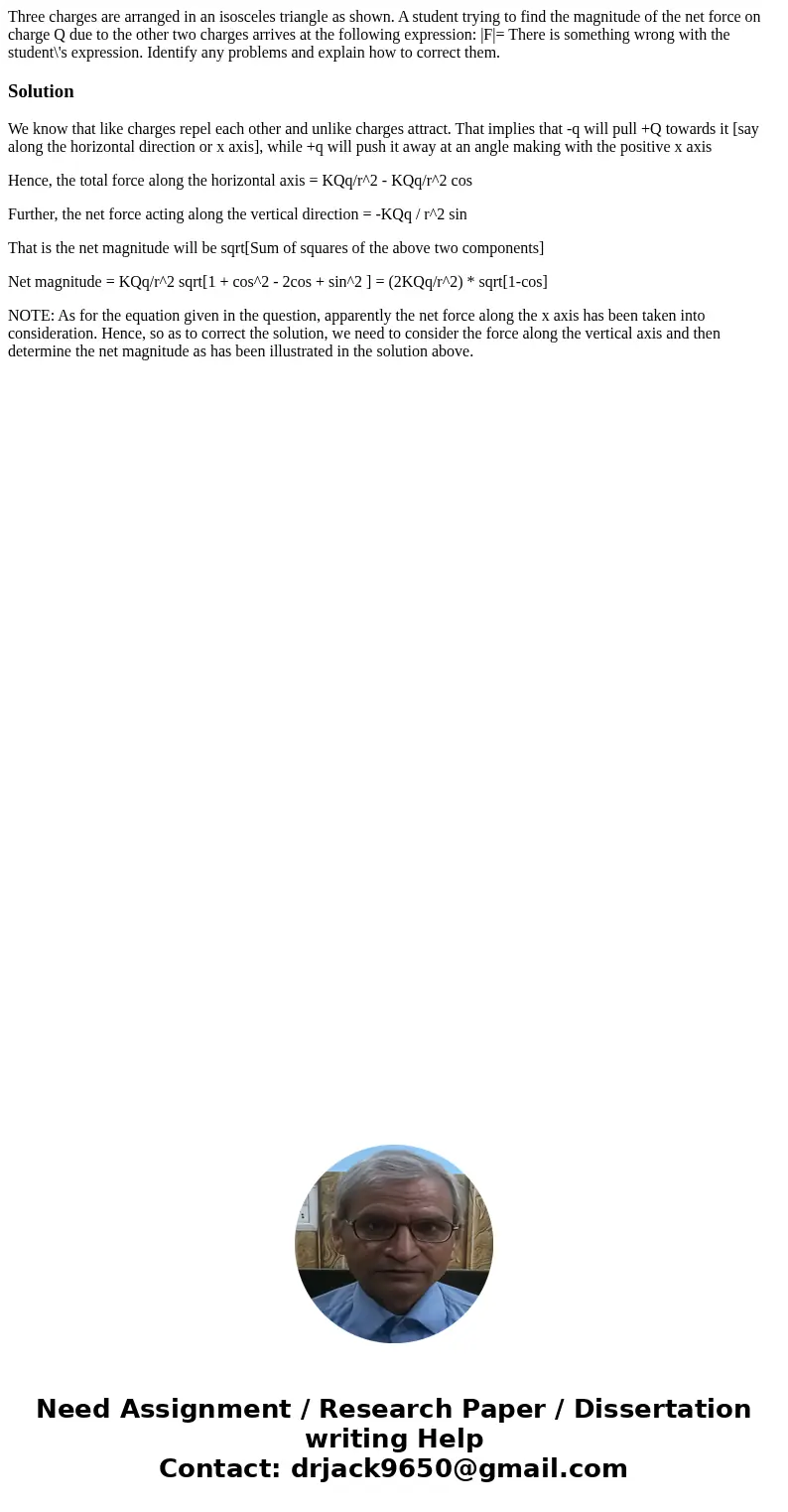Three charges are arranged in an isosceles triangle as shown
Solution
We know that like charges repel each other and unlike charges attract. That implies that -q will pull +Q towards it [say along the horizontal direction or x axis], while +q will push it away at an angle making with the positive x axis
Hence, the total force along the horizontal axis = KQq/r^2 - KQq/r^2 cos
Further, the net force acting along the vertical direction = -KQq / r^2 sin
That is the net magnitude will be sqrt[Sum of squares of the above two components]
Net magnitude = KQq/r^2 sqrt[1 + cos^2 - 2cos + sin^2 ] = (2KQq/r^2) * sqrt[1-cos]
NOTE: As for the equation given in the question, apparently the net force along the x axis has been taken into consideration. Hence, so as to correct the solution, we need to consider the force along the vertical axis and then determine the net magnitude as has been illustrated in the solution above.

 Homework Sourse
Homework Sourse